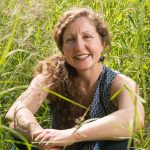Study questions U.S. policy of forest ‘restoration’
Phil Taylor, E&E reporter
Reprinted from Greenwire with permission from Environment & Energy Publishing, LLC. www.eenews.net 202/628-6500
Western forests today experience fewer high-severity wildfires than they did more than a century ago, depriving some fire-dependent species and stifling biodiversity, according to a new study. The study challenges conventional wisdom held by politicians and the Forest Service that the West is experiencing an unnatural burst in uncharacteristic wildfires as a result of a century of wildfire suppression.
In fact, some Western forests are experiencing a “deficit” in high-intensity blazes and in some cases should be encouraged to burn, said the study published this month in the journal PLOS ONE.
It questioned the government’s policy of mechanically thinning, or “restoring,” backcountry areas to ensure fires stay low to the ground and create “park-like” conditions. Thinning to reduce high-severity wildfire can reduce habitat for the imperiled black-backed woodpecker, often requires new roads and can introduce invasive species into the forest, the study authors said.
It’s bound to spark some controversy considering high-severity wildfires threaten lives and property and drain billions of dollars in taxpayer money each year. Moreover, aggressive forest thinning and restoration policies are politically popular because they create rural jobs and seek to mitigate wildfire threats to communities.
“Given societal aversion to wildfires, the threat to human assets from wildfires, and anticipated effects of climate change on future wildfires, many will question the wisdom of incorporating historical mixed-severity fire into management goals,” the study said.
“However, a major challenge lies with the transfer of information needed to move the public and decision-makers from the current perspective that the effects of contemporary mixed-severity fire events are unnatural, harmful, inappropriate and more extensive due to fire exclusion — to embrace a different paradigm.”
The study was funded by Environment Now, a nonprofit foundation in California whose goals include “preserving and restoring coastal, freshwater and forest ecosystems.”
It was independently conducted by 11 scientists from several Western universities, the Canadian Forest Service, the Earth Island Institute and Geos Institute.
The study used U.S. Forest Service data and other published sources to explore the historical prevalence of “mixed-severity fire regimes” in ponderosa pine and mixed-conifer forests in western North America and to try to determine whether mixed-severity fire patterns in those forests had changed as a result of the past century of fire suppression.
On the latter question, it concluded that the past century of fire suppression has not “greatly increased the prevalence of severe fire,” even though fuel levels in Western forests are believed to be much higher.
Since 1930, the rate of young forest establishment fell by a factor of four in the Sierra Nevada and Southwest, by a factor of three in the Klamath, and by half in the eastern Cascades and central and northern Rockies, it said.
The study recommends the government focus its fire mitigation work adjacent to homes in the wildland-urban interface instead of in the backcountry, where managed wildland fires could promote ecological benefits.
“The need for forest ‘restoration’ designed to reduce variation in fire behavior may be much less extensive than implied by many current forest management plans or promoted by recent legislation,” the study said. “Incorporating mixed-severity fire into management goals, and adapting human communities to fire by focusing fire risk reduction activities adjacent to homes, may help maintain characteristic biodiversity, expand opportunities to manage fire for ecological benefits, reduce management costs, and protect human communities.”
But other scientists and policymakers have argued that the societal benefits of taming mega-fires often trump whatever ecological benefits they may produce. In addition, climate change is expected to intensify droughts that create dangerously dry fuel conditions. Fire seasons are more than two months longer than in the 1970s, the Forest Service has said.
A study commissioned by the Interior Department and led by Northern Arizona University last spring found that although hazardous fuels treatments near communities can reduce wildfire risks to homes and people, backcountry fuels treatments are important to prevent mega-fires that can scorch watersheds and drain federal wildfire budgets.
While fire in the backcountry can be beneficial if it stays low to the ground, landscape-scale “crown” fires can damage watersheds, tarnish viewsheds and threaten communities, NAU’s Diane Vosick, one of the study authors, said last spring.
“In order to get ahead of the cost of large and severe fire, more treatments will be needed outside the wildland-urban interface,” Vosick told the Senate Energy and Natural Resources Committee last June.
The Forest Service and Interior Department also face political pressure to restore backcountry areas.
In December 2011, Congress inserted language in its appropriations report ordering both agencies to halt policies that direct most hazardous fuels funding to the wildland-urban interface, spending it instead on the “highest priority projects in the highest priority areas.”
For now, “restoration” across the National Forest System remains popular policy in Congress and in Western states.
According to the Forest Service, the states of Florida, Georgia, Utah, California, Texas, Arizona, New Mexico and Colorado have all experienced their largest or most destructive wildfire in just the last several years. Wildfires burn twice as many acres annually compared with the 1970s, and the number of wildfires annually that cover more than 10,000 acres has increased sevenfold.
Forest Service Chief Tom Tidwell last week told Congress there are nearly two dozen landscape-scale collaborative forest restoration projects underway that seek to “re-establish natural fire regimes and reduce the risk of uncharacteristic wildfire.”
“Our findings are sure to be controversial as each year federal agencies spend billions of dollars in fuel reduction costs in the backcountry based on the assumption that we have more high-severity fire now than we did historically,” said Dominick DellaSala, chief scientist at the Geos Institute, one of the study’s authors. “Fuel treatments are best targeted immediately adjacent to where people live, given that the increasing costs of suppressing fires is not ecologically justifiable and may, in fact, produce artificially manipulated landscapes that need more fire to remain healthy and productive.”
Join the Cornerstone Network
Sign up with a monthly donation and become part of our Cornerstone Network. Network members recieve the messages posted here first, delivered directly to your inbox. Your ongoing support is the foundation of our work.

 Arsum is the Senior Adaptation and Coastal Resilience Specialist for the National Wildlife Federation’s Southcentral Region. In this role, she advances climate adaptation efforts, with a focus on nature-based approaches to address the impacts of climate change and extreme events across the Gulf region. She has authored and co-authored numerous publications on climate impact assessments and adaptation solutions. Additionally, she regularly participates in state-based coastal resilience and hazard mitigation planning across the Gulf, collaborating with regional and local stakeholders.
Arsum is the Senior Adaptation and Coastal Resilience Specialist for the National Wildlife Federation’s Southcentral Region. In this role, she advances climate adaptation efforts, with a focus on nature-based approaches to address the impacts of climate change and extreme events across the Gulf region. She has authored and co-authored numerous publications on climate impact assessments and adaptation solutions. Additionally, she regularly participates in state-based coastal resilience and hazard mitigation planning across the Gulf, collaborating with regional and local stakeholders. Frank is the former President of the Reinsurance Association of America. Frank currently serves on the Advisory Board of the OECD’s International Network for the Financial Management of Large-Scale Disasters, the RAND Center on Catastrophic Risk Management and Compensation, and the University of Cincinnati’s Carl H. Lindner III Center for Insurance and Risk Management Advisory Board.
Frank is the former President of the Reinsurance Association of America. Frank currently serves on the Advisory Board of the OECD’s International Network for the Financial Management of Large-Scale Disasters, the RAND Center on Catastrophic Risk Management and Compensation, and the University of Cincinnati’s Carl H. Lindner III Center for Insurance and Risk Management Advisory Board. Jim is a multilingual world traveler. Based in Bavaria during the 1970s, Jim spent most of this period in India, Afghanistan and Nepal, where he founded and operated a charitable medical clinic serving Tibetan Refugees. He settled in Oregon in 1983 on a forested ranch in the Umpqua National Forest.
Jim is a multilingual world traveler. Based in Bavaria during the 1970s, Jim spent most of this period in India, Afghanistan and Nepal, where he founded and operated a charitable medical clinic serving Tibetan Refugees. He settled in Oregon in 1983 on a forested ranch in the Umpqua National Forest. Dr. Micah Hahn is an Associate Professor of Environmental Health in the Institute for Circumpolar Health Studies at the University of Alaska-Anchorage. She received her joint PhD in Epidemiology / Environment and Resources from the University of Wisconsin-Madison and her MPH in Global Environmental Health from Emory University. Subsequently, she was a postdoctoral fellow for the CDC Climate and Health Program, and in this position worked collaboratively with the CDC Division of Vector-borne Diseases and the National Center for Atmospheric Research. Her research focuses on understanding the health impacts of climate change and working with communities to develop locally-relevant adaptation and resilience-building strategies. Dr. Hahn is also on the Management Team of the Alaska Climate Adaptation Science Center.
Dr. Micah Hahn is an Associate Professor of Environmental Health in the Institute for Circumpolar Health Studies at the University of Alaska-Anchorage. She received her joint PhD in Epidemiology / Environment and Resources from the University of Wisconsin-Madison and her MPH in Global Environmental Health from Emory University. Subsequently, she was a postdoctoral fellow for the CDC Climate and Health Program, and in this position worked collaboratively with the CDC Division of Vector-borne Diseases and the National Center for Atmospheric Research. Her research focuses on understanding the health impacts of climate change and working with communities to develop locally-relevant adaptation and resilience-building strategies. Dr. Hahn is also on the Management Team of the Alaska Climate Adaptation Science Center. Michael is a former Founding Principal of Resilient Cities Catalyst, a global non-profit helping cities and their partners tackle their toughest challenges. He is currently the Executive Director of Climate Resilience Academy at the University of Miami.
Michael is a former Founding Principal of Resilient Cities Catalyst, a global non-profit helping cities and their partners tackle their toughest challenges. He is currently the Executive Director of Climate Resilience Academy at the University of Miami. Dr. Quintus Jett is a consultant, educator, and strategist for public causes. He has a doctorate in Organizations & Management from Stanford University, and a two-decade faculty career which spans schools, departments, and programs of business, engineering, liberal studies, divinity, and public and nonprofit management. Following Hurricane Katrina in 2005, Dr. Jett launched a volunteer project in New Orleans, which enlisted residents, students from over a dozen colleges and universities, and hundreds of others to field map the city’s Gentilly district, Lower Ninth Ward, and New Orleans East. Dr. Jett is an innovator in higher education, bridging the divide between academic research and the other priorities of the modern university, including student access and diversity, community engagement, and providing foundations for life-long learning in today’s rapidly changing world.
Dr. Quintus Jett is a consultant, educator, and strategist for public causes. He has a doctorate in Organizations & Management from Stanford University, and a two-decade faculty career which spans schools, departments, and programs of business, engineering, liberal studies, divinity, and public and nonprofit management. Following Hurricane Katrina in 2005, Dr. Jett launched a volunteer project in New Orleans, which enlisted residents, students from over a dozen colleges and universities, and hundreds of others to field map the city’s Gentilly district, Lower Ninth Ward, and New Orleans East. Dr. Jett is an innovator in higher education, bridging the divide between academic research and the other priorities of the modern university, including student access and diversity, community engagement, and providing foundations for life-long learning in today’s rapidly changing world. Scott is Monfort Professor of Atmospheric Science at Colorado State University. He has written about 100 publications in the peer-reviewed climate literature, is a former editor of the Journal of Climate, and served for five years as founding Science Chair of the North American Carbon Program.
Scott is Monfort Professor of Atmospheric Science at Colorado State University. He has written about 100 publications in the peer-reviewed climate literature, is a former editor of the Journal of Climate, and served for five years as founding Science Chair of the North American Carbon Program. Linda has many years of experience in disaster preparedness and resilience. She has been an elected official on the Linn County Iowa Board of Supervisors, Chair of the Metropolitan Planning Organization, the East Central Iowa Council of Governments, the statewide Mental Health Developmental Disability and the Linn County Board of Health. Langston is a former president of the National Association of Counties (2013-2014).
Linda has many years of experience in disaster preparedness and resilience. She has been an elected official on the Linn County Iowa Board of Supervisors, Chair of the Metropolitan Planning Organization, the East Central Iowa Council of Governments, the statewide Mental Health Developmental Disability and the Linn County Board of Health. Langston is a former president of the National Association of Counties (2013-2014). Ken works with families and organizations as a mediator, organizational consultant, trainer and facilitator. Along with his passion for helping people prepare for and reduce climate change, Ken also volunteers as a mediator through Mediation Works and is passionate about supporting youth through mentoring with Boys to Men of Southern Oregon.
Ken works with families and organizations as a mediator, organizational consultant, trainer and facilitator. Along with his passion for helping people prepare for and reduce climate change, Ken also volunteers as a mediator through Mediation Works and is passionate about supporting youth through mentoring with Boys to Men of Southern Oregon. Matthew is a retired high school teacher who was once honored as Oregon High School Social Studies Teacher of the Year. Before his teaching career he was in the restaurant business in Portland. He is also a lawyer who has been a member of the Oregon State Bar Association since 1980.
Matthew is a retired high school teacher who was once honored as Oregon High School Social Studies Teacher of the Year. Before his teaching career he was in the restaurant business in Portland. He is also a lawyer who has been a member of the Oregon State Bar Association since 1980. Andrea is the Resilience Policy Advisor for the North Carolina Office of Recovery and Resiliency. She works across state agencies and with local governments to increase the state’s resilience to the impacts of climate change.
Andrea is the Resilience Policy Advisor for the North Carolina Office of Recovery and Resiliency. She works across state agencies and with local governments to increase the state’s resilience to the impacts of climate change.